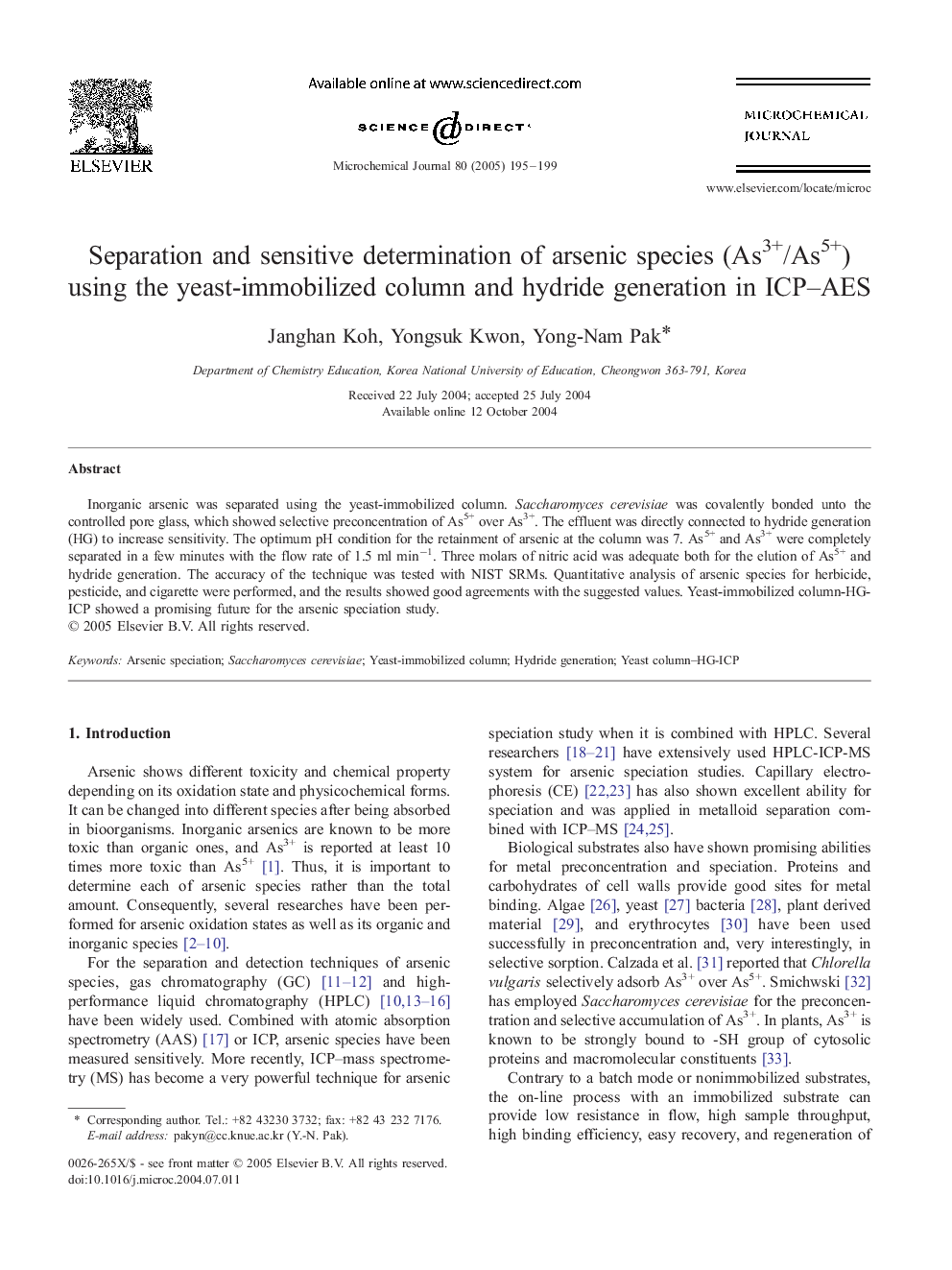| Article ID | Journal | Published Year | Pages | File Type |
|---|---|---|---|---|
| 9754996 | Microchemical Journal | 2005 | 5 Pages |
Abstract
Inorganic arsenic was separated using the yeast-immobilized column. Saccharomyces cerevisiae was covalently bonded unto the controlled pore glass, which showed selective preconcentration of As5+ over As3+. The effluent was directly connected to hydride generation (HG) to increase sensitivity. The optimum pH condition for the retainment of arsenic at the column was 7. As5+ and As3+ were completely separated in a few minutes with the flow rate of 1.5 ml minâ1. Three molars of nitric acid was adequate both for the elution of As5+ and hydride generation. The accuracy of the technique was tested with NIST SRMs. Quantitative analysis of arsenic species for herbicide, pesticide, and cigarette were performed, and the results showed good agreements with the suggested values. Yeast-immobilized column-HG-ICP showed a promising future for the arsenic speciation study.
Related Topics
Physical Sciences and Engineering
Chemistry
Analytical Chemistry
Authors
Janghan Koh, Yongsuk Kwon, Yong-Nam Pak,
